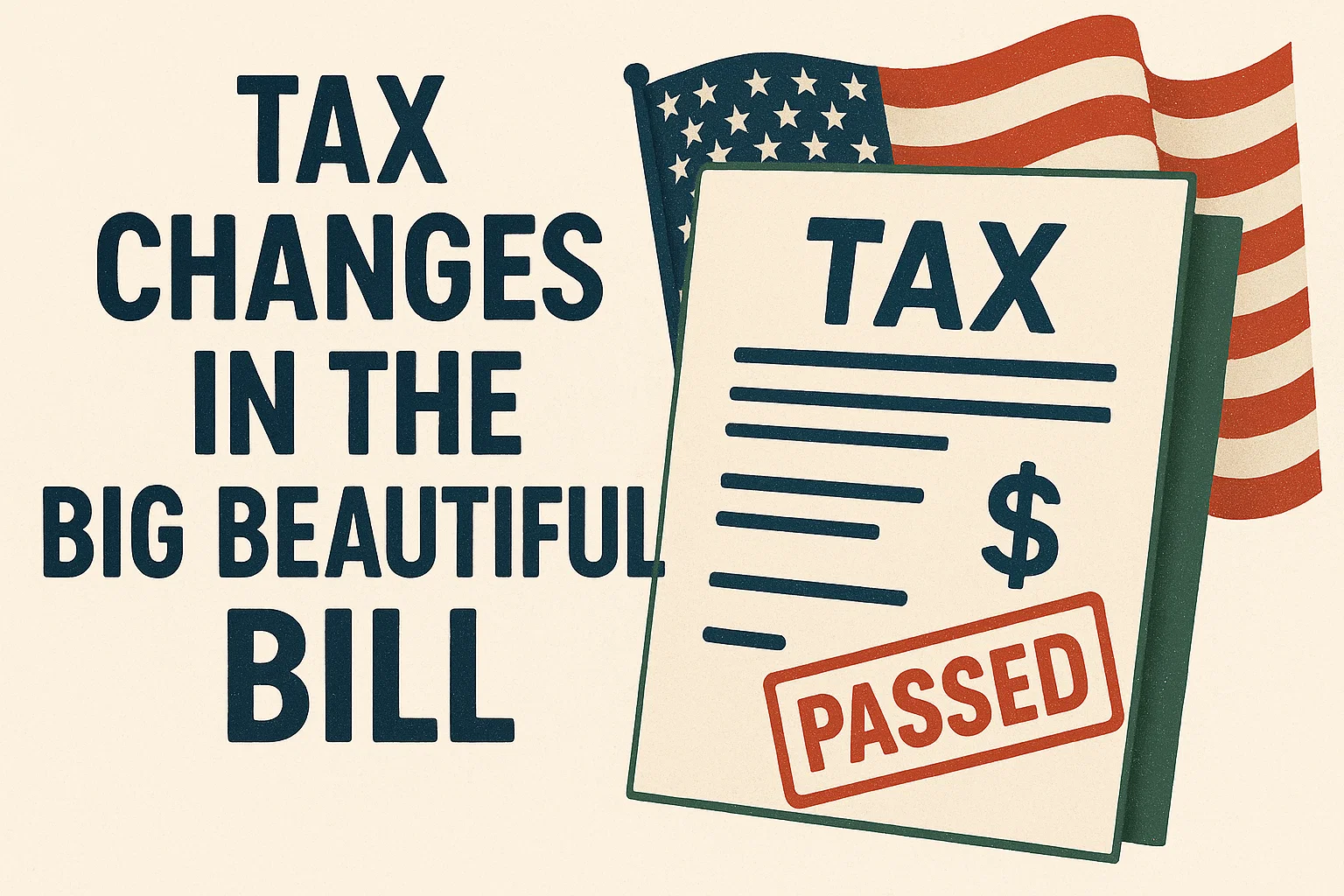Many Tax Changes that can Affect Your Bottom Line
The recently passed President Trump's Big Beautiful Bill (BBB) tax package includes several important changes that may benefit small businesses, side gigs and entrepreneurs. Here’s a clear summary of the biggest updates, what changed, and how they may help you. Be aware that this is not an exhaustive list of all the tax changes.
QBI Deduction (Qualified Business Income Deduction)
- What It Is: A tax deduction that allows owners of pass-through entities to deduct up to 20% of their qualified business income from their personal taxable income.
- What Changed: The 20% deduction for pass-through income is now permanent.
- What It Was Before: The deduction was scheduled to sunset after 2025 under previous law.
- Who It Applies To: Sole proprietors, LLCs, partnerships and S corporations.
- Why It Matters: This deduction lowers the taxable income of many small business owners, reducing their overall tax bill without changing their operations.
- Example: If your business earns $100,000 in net income, you can deduct $20,000 from your taxable income. This lowers your personal tax bill and keeps more cash in your pocket.
Section 179 Expensing
- What It Is: A tax rule that allows businesses to deduct the full purchase price of qualifying equipment or software in the year it’s purchased.
- What Changed: The expensing limit is now $2.5 million.
- What It Was Before: The previous limit was $1,160,000 (adjusted annually for inflation).
- Example: If you buy $200,000 in office equipment and machinery, you can deduct the full amount this year instead of depreciating it over time.
Bonus Depreciation
- What It Is: A tax deduction that allows businesses to immediately write off a percentage of the cost of certain depreciable assets such as in real estate building. This was typically utilized after a business hit the limit on 179 Expensing.
- What Changed: Full (100%) bonus depreciation is extended.
- What It Was Before: Bonus depreciation was phasing down from 100% to 80% in 2025 under prior law. Each year it was scheduled to phase down back to 60%.
- Why It Matters: Businesses can write off the cost of eligible property right away, improving cash flow and reducing tax liability in the year of purchase.
- Example: A construction company buys a $500,000 excavator. With bonus depreciation, the company deducts the entire cost in the current year, reducing taxable income by $500,000.
R&E Amortization Relief (Research and Experimentation Costs)
- What It Is: Expenses related to developing new products, processes, or software, often referred to as research and development (R&D).
- What Changed: Small businesses can now deduct research and development costs immediately instead of amortizing them over five years.
- What It Was Before: Since 2022, businesses were required to amortize R&D expenses over five years.
- Why It Matters: This change encourages innovation and reduces upfront tax burdens for businesses investing in new products, services or technology.
- Example: If your business spends $50,000 on developing a new product, you can deduct the full $50,000 in the current year instead of spreading it out.
QSBS Expansion (Qualified Small Business Stock)
- What It Is: A tax benefit that allows founders and early investors to exclude some or all of the gains from selling shares in qualifying small businesses.
- What Changed: Better capital gains exclusions for Qualified Small Business Stock (QSBS).
- What It Was Before: The previous QSBS exclusion was 50% to 100% of gains depending on when the stock was acquired.
- Why It Matters: Founders and early investors can exclude a larger portion of gains from federal taxes when selling startup stock, encouraging entrepreneurship and investment.
- Example: You sell $500,000 of QSBS shares after holding them for five years and may be able to exclude most or all of the gain from taxes, depending on your eligibility
Personal Car Loan Interest Deduction (U.S.-Built Vehicles)
- What It Is: A new deduction for interest paid on loans for vehicles built in the United States.
- What Changed: Deduct up to $10,000 per year in loan interest on NEW US made vehicles from 2025-2028 that are for personal use.
- What It Was Before: You could not itemize loan interest for personal vehicles before this.
- Why It Matters: If you have a vehicle that does not qualify as a business vehicle, you can now deduct some of the interest against your personal tax burden. Vehicles owned by the business can already deduct interest expense.
SALT Cap Increase (State and Local Taxes)
- What It Is: The State and Local Tax (SALT) deduction allows individuals to deduct certain state and local taxes from federal taxable income.
- What Changed: The deduction limit for state and local taxes (SALT) has been increased to $40,000
- What It Was Before: The SALT deduction was capped at $10,000.
- Why It Matters: Small business owners in high-tax states benefit by being able to deduct more of their state and local tax payments, reducing federal tax liability.
- Example: If you pay $20,000 in state income and property taxes, you can now deduct this amount, lowering your federal tax bill.
Estate Tax Exemption Increase
- What It Is: A tax exemption that determines how much of a deceased person’s estate is exempt from federal estate tax.
- What Changed: The estate tax exemption is now $15 Million per person and starting 2026 will increase indexed to inflation
- What It Was Before: The previous exemption was approximately $13.6 million per person in 2024 (adjusted annually).
- Why It Matters: Family-owned businesses may now be passed to the next generation with less estate tax liability, preserving wealth and ownership
Final Thought:
Understanding these new tax benefits helps you make better financial decisions. Review these changes with your tax professional and adjust your business strategy to take advantage of the opportunities in the new BBB package.
